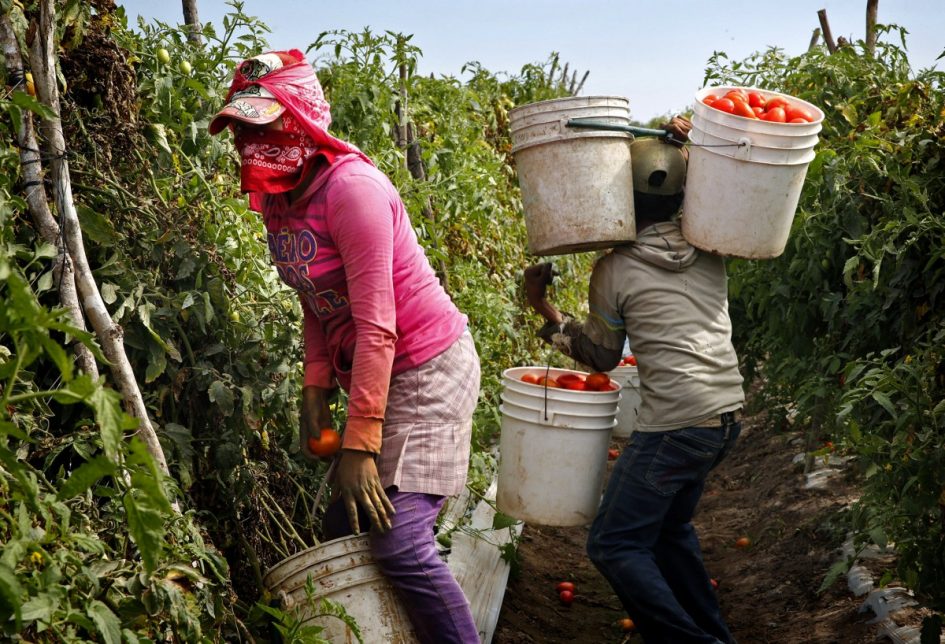Picking ease refers to how easily fruit comes off the plant when you’re harvesting and was ranked on a 1-5 scale (1=difficult, 5=easy). The UW-Madison report from last year indicated they only scored picking ease once, but I gave a score at every harvest, so each variety has five observations for analysis. Since we’re ranking this parameter on a scale, the data is again ordinal, which lends itself to goodness of fit (Chi square) analysis. Pearson’s chi square (χ2(40) = 48.53, p = .17) did not support significant differences between varieties.
Looking back, there was a general trend that early harvests tended to score more difficult to pick than later harvests. Difficulties in picking fruit means the resistance to removal from the plant must be overcome by brute force. In reality you could use scissors or something, but no farmer or farm worker has time for scissor-harvesting tomatoes. When you have to twist, tug, and pull to get fruit off the vine, it still takes extra time, other fruit gets dislodged and ripe fruit can get bruised, cracked or split. While the statistical analysis doesn’t warrant any defensible conclusions, I noticed Home Stoop, Estate, and Damsel were the most difficult to pick throughout the trial.
| Variety | Average Picking Ease Score | Rank |
|---|---|---|
| (B) OSU S200 | 4.4 | 1 |
| (I) Plum Regal | 4.0 | 2 |
| (J) OSU LB8-7 | 3.8 | 3 |
| (H) Crimson Sprinter | 3.8 | 3 |
| (C) Stellar | 3.6 | 5 |
| (D) Matina | 3.6 | 5 |
| (F) Plum Perfect | 3.2 | 7 |
| (K) Mt. Merit | 3.0 | 8 |
| (E) Estate | 2.8 | 9 |
| (G) Damsel | 2.8 | 9 |
| (A) Home Stoop | 2.2 | 11 |
A word on the photo: When I was looking for an image, I found countless romantically staged scenes of woven baskets and antique metal colanders in the field, brimming with red tomatoes. But this belies the reality of how our food gets from the field to the store. I was inspired by a conversation with a friend and local farm manager who has spent many seasons working alongside and supervising migrant laborers. With the current socio-political climate here in the United States, immigration and migrant labor are under a microscope. In my experience, migrant laborers are not here with the ill-intent to take American jobs, but rather they are desperate for a wage that allows access to shelter and food for their families. These wages cannot be found in their home countries, where many of them would rather be. I believe this is partly due to international, free-market trade and food commodification, which allows the US (and others) to offload surplus crops into the Mexican market, thereby squeezing out their local farmers and producers who can’t compete. Furthermore, migrant laborers are often kept in squalor conditions. I know no Americans that would pick tomatoes for piece-meal wages with no healthcare nor benefits, yet this is what we expect for the people that pick our food. By all means, this is not an easy problem: not easily understood, not easily fixed, and definitely not easy to see. I encourage everyone to consider the role these migrant farm workers play in each of our lives and perhaps view the tumultuous political climate with a different sense of nuance.

Leave a Reply